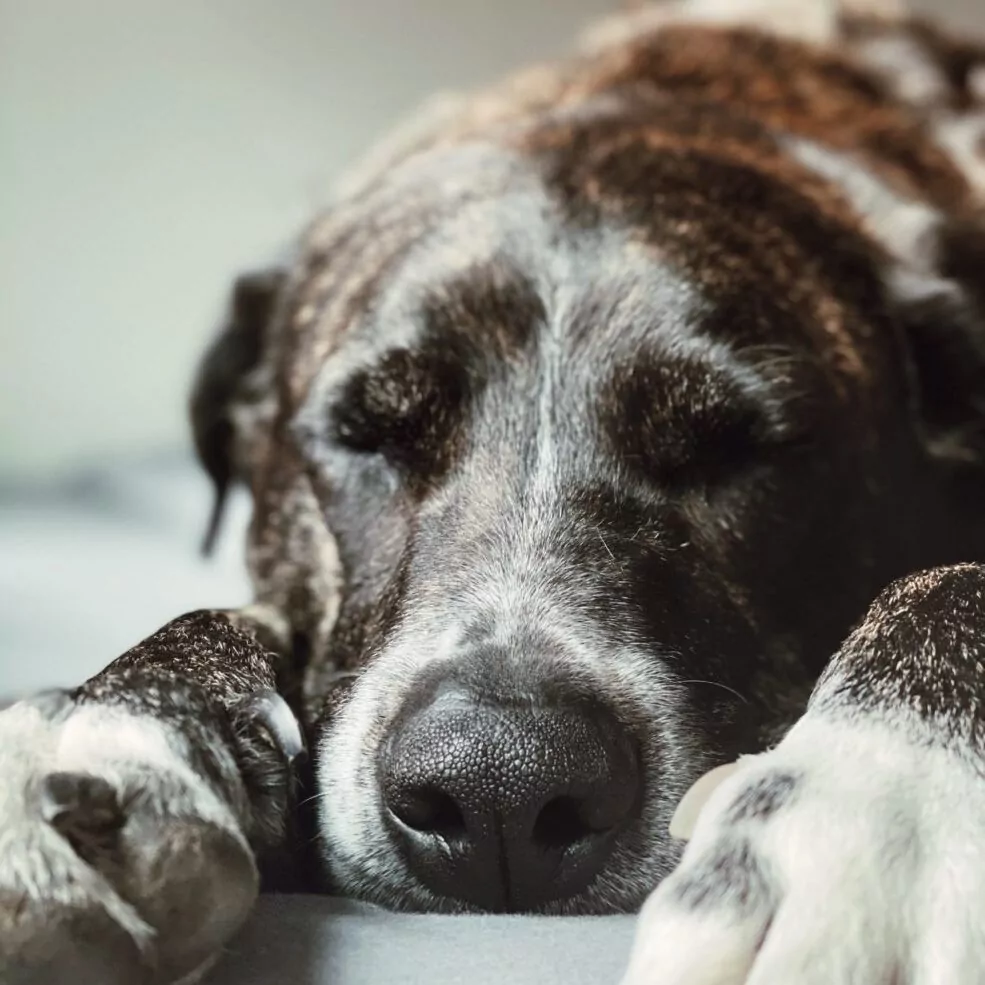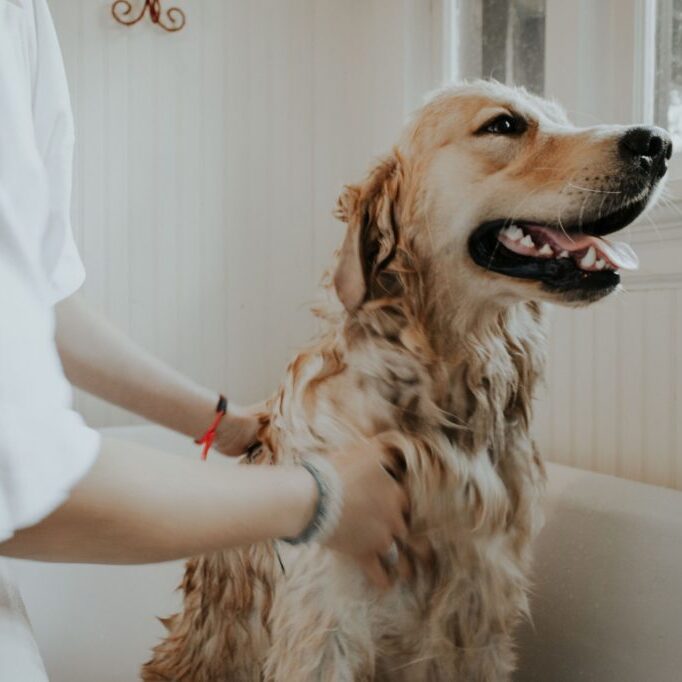Dog Diseases & Conditions
Why Does My Dog Get Ear Infections?

Ear ye! Ear ye! Canine ears come in all shapes, from erect to drooping and everything in between. Your dog’s ears are vital for honing in on sounds and conveying moods, from fearful to friendly.
But no canine ear should smell like dirty socks or stale corn chips, ooze with goo, or have a pile of what looks like coffee grounds inside the ear canal. Your dog may pick up unwelcome guests from a hike with you, such as foxtails or burrs that have lodged in his ears. All of these things can either signal or cause nasty infections that are “ear-itating” and sometimes downright painful to our dogs.
A dog with an ear infection may flatten his ears and lean his head to one side because of the itchiness or irritation. You may see him rubbing his ears against the sofa, vigorously scratching his ears, or shaking his head. The ears may become inflamed and red. These are all signs of potential medical issues that need to be addressed quickly.
Ear issues account for about 15 percent of all canine veterinary visits.
“Earlier intervention is always better because the skin can change really quickly,” says Ashley Bourgeois, VMD, DACVD, a board-certified veterinary dermatologist and founder of The Derm Vet, LLC in Portland, Oregon. She also hosts The Derm Vet podcast. “It is uncomfortable for a dog to itch or scratch, and don’t underestimate the discomfort in your dog.”
Like many pet parents, Dr. Bourgeois has a dog with recurrent ear infections.
“She will start to groan when I rub her ear or scratch at her ear with her back foot when an infection is present,” she says. “But by managing her underlying allergies and using frequent ear flushing, she gets a lot less infections and is more comfortable.”
But diagnosing the problem can be tricky.
Pinpointing the Cause
“There is no guarantee that a particular smell or appearance will be a specific infection,” Bourgeois says. “Even as a specialist, I have been absolutely wrong about what I ‘think’ the infection is based on smell or appearance.”
Your veterinarian will take a medical history and then examine your dog’s ears using an otoscope. This medical tool is equipped with light and magnification to provide a better look inside the ear canal.
Next step: cytology.
“Cytology (inspecting a skin sample under the microscope) is important to differentiate the infection and use the appropriate treatment,” Bourgeois says. “It is a fast test and the results help us guide our treatment plan so we can put the dog on the right medication for their specific ear issue.”
She says a dog can start with a bacterial infection and then develop a yeast infection.
“We need to know this and this cytology test helps us identify the type of infection,” she says. “It also enables us to diagnose other diseases, such as ringworm spore or a form of cancerous cells.”
During the exam, your veterinarian may use the word otitis to describe the condition of your dog’s ears. Otitis means that the ears are inflamed.
Or your veterinarian may detect a foreign body in your dog’s ear or excessive waxy buildup that can be removed to provide relief to your dog.
Treat Ear Infections Promptly
Ear infections should not be ignored. They won’t go away on their own, and leaving them untreated can result in your dog losing the ability to hear and can affect his balance.
Causes of ear infections include the following:
- Food allergies
- Environmental allergies
- Congenital abnormalities
- Hypothyroidism
- Cushing’s disease
- Autoimmune diseases
“Whatever the cause, controlling the primary disease or allergy can lessen the frequency and severity of infections,” she says.
Work with your veterinarian on selecting the right safe ear cleaner and medication to use on your dog at home. Your dog may need anti-bacterial, anti-fungal, or anti-inflammatory medications, or medicated cleaners and rinses.
Tips for Treating Infected Ears
“Make ear cleaning a positive experience,” says Dr. Bourgeois. “If you can distract your dog with treats, canned food smeared on the side of the bathtub or have another person petting your dog’s head, then you can minimize the discomfort and desire for your dog to shake his head.”
Never use a cotton swab to clean ears because you risk rupturing your dog’s ear drum. Ouch! Instead, put the ear product on a cotton ball or gauze and gently massage the ear. Go with a reputable product that doesn’t sting, is easy to use, and has effective cleaning enzymes.
“Use commercial ear products as directed by placing drops into the vertical canal (the more superficial part) and then rubbing the entire canal to spread out the application,” she says.
Here is a step-by-step guide to successfully administering medication in your dog’s ears:
1. Don’t be in a rush. Dogs pick up on our impatience and frustration. Wait until you have time to do the job right.
2. Make it a one-on-one moment. Bring your dog into a bedroom or bathroom or other place that has a door to keep other pets from being nosy nellies and distractive.
3. Offer a treat. Hey, your dog is complying so pay him with a tasty reward.
4. Get your dog into a sit. Position yourself behind your dog, so you can better control his head and avoid an eye-to-eye stare down.
5. Direct the ear product into the ear. Gently massage the ear for about 30 seconds. Listen for that squishing sound to make sure it’s getting down into the ear.
6. Be ready for the head shake, which helps ear drop enzymes move down into the ear canal. Have a towel within reach to catch the droplets.
7. Finish with a treat and calorie-free praise.
Keeping Your Dog’s Ears Healthy
Protect your dog’s ears by regularly inspecting them, both visually and with a good sniff, and keeping them clean. If your dog loves to swim in pools, lakes, oceans, and other bodies of water, take time after the swim to thoroughly dry his ears to prevent excess moisture from building up in his ears.
At bath time, select a spot best suited for your dog’s size. Little dogs fare best in kitchen or bathroom sinks. Medium-size to large dogs are better in walk-in showers and bathtubs. Place rubber, non-skid mats to keep your dog from slipping. Make sure water is warm, not cold, and definitely not hot.
Avoid using spray nozzles, especially around your dog’s head, to prevent water from getting inside the ears. Instead, wet and rinse around the head using cups of warm water. Use a warm, wet washcloth to clean your dog’s face before toweling dry.
“Ear infections can progress over time, causing swelling of the ear canal, pain, edema, and resistant infections,” says Dr. Bourgeois. “In extreme cases, the cartilage of the ear canal can calcify, which is an irreversible change, and may lead to the surgical removal of the ear canal. So, it is important to manage these cases appropriately from an early age to prevent this progression.”
Did you find this helpful? Share it!
Questions for your Vet
- What is the best way to remove a burr or foxtail from my dog’s ear?
- How can an ear infection affect my dog’s sense of balance?
- What are some at-home care tips for dogs with heavy, droopy ears?
About VetScoop
Pets make our lives better. At VetScoop, we’re on a mission to return the favor by giving you access to trustworthy, science-based information so you can provide the best possible care for your pets.
Related Articles We Think You'd Like





